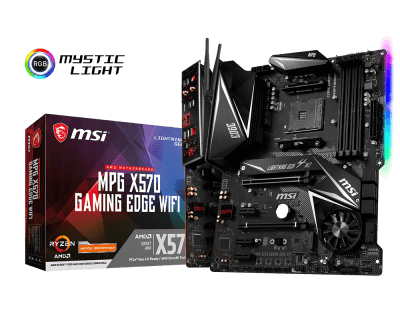The problem you're having is that when Windows 10 was installed on your system, it wasn't in the correct configuration for enabling SecureBoot. Trying to set it now will require a complete reset of your system. An upgrade is very unlikely. However If you're willing to do a fresh install, you can set things up the right way and installing Windows 11 will succeed. But if for whatever reason it still doesn't want to take, you can always use a TPM/SecureBoot bypass method, but let's not jump to that option until you've worked everything out.
First, before you begin this process, make sure you backup everything you don't want to lose from your drive and unplug any drives Windows will not be installed to. Also download any drivers for your hardware you might need. Mostly graphics and motherboard. Below is the link to the motherboard you listed.
Worth buying AMD AM4 X570 ATX gaming motherboard, lightning PCIe 4.0, lightning M.2, lightning M.2, Frozr heatsink, WiFi, USB 3.2 Gen 2, M.2 heatsink, good overclocking, extended heatsink, pre-install I/O, MSI GAMING

www.msi.com
Next, let's get you familiar with your motherboard BIOS. Head over to MSI's site and grab the manual.
Worth buying AMD AM4 X570 ATX gaming motherboard, lightning PCIe 4.0, lightning M.2, lightning M.2, Frozr heatsink, WiFi, USB 3.2 Gen 2, M.2 heatsink, good overclocking, extended heatsink, pre-install I/O, MSI GAMING

www.msi.com
Open it up and scroll down to the BIOS Setup on page 43. Read through that section and find the settings needed to enable SecureBoot with drives enabled. It should be as simple as going to the Boot section, selecting UEFI only, going to the Trusted Computing section and enabling AMD fTPM, then going to Windows OS section and enabling SecureBoot.
Please note, once you enable these options your current installation of Windows will no longer be accessible. This is an unfortunate side-effect of these settings but is normal.
Next, you should then be able to boot the Windows 11 ISO from a USB drive and install Windows 11. Once into the Setup, you will see a drive select screen during the process. Make sure you delete the existing partitions and let Windows create what it needs. Then you can continue with setup.
If you hit a snag or need help, let me know and I'll walk you through it further.









